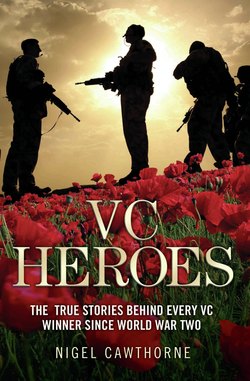Читать книгу VC Heroes - The True Stories Behind Every VC Winner Since World War Two - Nigel Cawthorne - Страница 6
На сайте Литреса книга снята с продажи.
ОглавлениеThe Korean War was a direct consequence of the end of World War Two in the Far East. Throughout most of the war a non-aggression pact between the Soviet Union and Japan held. But on 8 August 1945 – two days after the first atomic bomb had been dropped on Hiroshima – the Soviet Union revoked the pact and declared war on Japan, invading Manchuria, seizing the northern part of Korea and taking more than 2 million Japanese prisoners before the Japanese capitulation on 15 August.
In an effort to disarm the Japanese Army and repatriate the estimated 700,000 Japanese who had gone to live in Korea since Japan occupied that country in 1905, the United States and the Soviet Union decided to divide the peninsula at the 38th parallel, formalising their zones of occupation. The Soviets quickly politicised the division by installing a hardline communist government in the North under Kim Il-sung, leader of the Korean contingent of the Soviet Red Army. US President Harry S Truman persuaded the newly founded United Nations to assume responsibility for Korea, while US troops guaranteed the military security of the South.
The UN then decided to set up an independent republic in South Korea, which led to a partisan uprising by communist guerrillas. When this failed, Kim Il-sung persuaded his sponsor, the Soviet leader Joseph Stalin, to back an invasion of the South. On 25 June 1950, the North Korean People’s Army swept across the 38th parallel, taking the South Korean capital of Seoul and forcing the South Koreans and the Americans back to a small perimeter around the port of Pusan.
Truman returned to the UN and asked for member states to provide military assistance to the fledgling Republic of Korea. This could have been vetoed by the Soviet Union as a permanent member of the Security Council. However, the Soviets were boycotting the UN at the time in an attempt to get China’s seat on the Security Council – occupied by the Nationalists, who were by then confined to the island of Taiwan – handed over to the representatives of the People’s Republic in Beijing. Other nations, including France, Turkey, Belgium, Greece, the Netherlands, Colombia, Ethiopia, Thailand and the Philippines, sent soldiers to defend South Korea, while the British and Australians contributed a Commonwealth brigade. The entire United Nations force was under the command of the US General Douglas MacArthur.
The UN forces began to push the North Koreans back, then outflanked them with a successful amphibious landing at In’chon on 14 September 1950, reoccupying Seoul soon after. MacArthur’s forces crossed the 38th parallel and pursued the North Koreans almost to the Yalu river, which forms the border between North Korea and China.
In October 1950, the People’s Republic of China entered the war on North Korea’s side with Soviet air support. The UN forces were quickly pushed back deep into South Korea. MacArthur was sacked for having failed to limit the war in Korea and provoking the Chinese attack. He was replaced by General Matthew B Ridgway.
The war swung back and forth across the 38th parallel with huge casualties on both sides. It soon became clear that the war could be won by neither belligerent. On 8 July 1951, liaison officers from both sides met at the ancient capital of Kaesong on the front line. While they talked, the fighting continued. In October 1951, the talks were moved to a more secure area in the village named Panmunjom, where an armistice was signed on 27 July 1953. However, no peace treaty has ever been signed. Technically, despite the long-lasting truce, the two sides are still at war and meetings continue at Panmunjom.
This long and bloody struggle from stalemate to stalemate produced four VCs.
